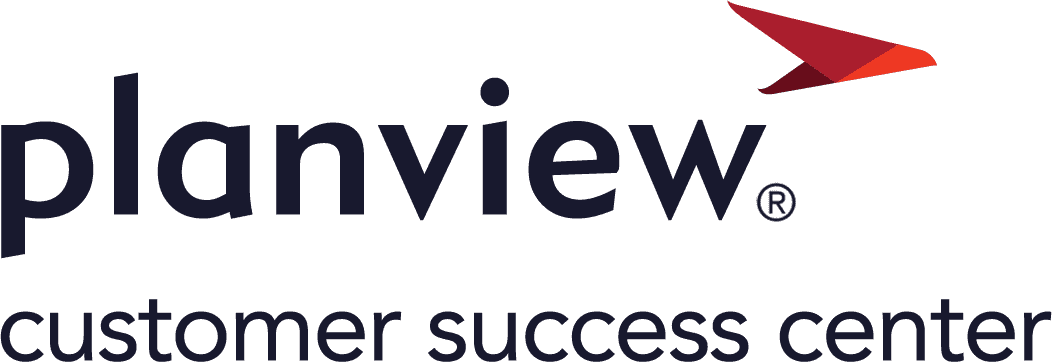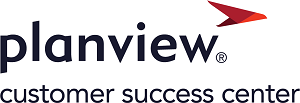About Admin
The Admin view is accessible to those users that have been granted administrative privileges (members of the Admin standard group). The Admin view provides access to a variety of sections where the setup and configuration of PPM Pro occurs. Each section is described briefly below.
Organization
The Organization view contains a set of pages where you can configure global (organization-wide) settings.
Info
The Organization Info tab lists the basic contact information for the organization, including the name of the primary administrator. Your administrator configures organization-wide information on this tab, including the Time and Expense Period (Weekly or Bi-monthly time and expense sheets) and Target Billable and Target Capacity Hrs/Week, how to handle passwords, and the global setting for hiding/showing text labels on the top-level navigation icons.
Additional sections include:
- The Licenses section provides a summary of all the licenses, active users, total number of users, and a link to the subscription agreement
- The Localization section is for configuring your organization's timezone, and displays the setting for Currency and Locale (which are set by PPM Pro).
- The Organization Guidelines lists any guidelines, or rules, that your organization has in place to govern the user of PPM Pro. The only guideline currently supported is the timesheet guidelines.
Hierarchy
The Organization Hierarchy is a tool for organizing users and permissions in the PPM Pro system. The hierarchy often reflects your organization structure, and is comprised of units (like departments), managers, and unit members/resources, each of which is defined below. See About the Organization Hierarchy for more information.
Roles
Lists all the roles you have created for your organization. You can create/delete roles, and with the appropriate permissions, manage rates.
Resource Settings
A group of settings for configuring various aspects of how PPM Pro calculates and displays resource information, as well as organization-wide settings for the default organization calendar and the standard working hours per day.
Timesheet Settings
Timesheet settings determine how your organization uses the PPM Pro timesheet feature. See Configuring Timesheet Rules and Settings
Timesheet Alerts
The Timesheet Alerts section is where you configure timesheet alerts. See Configuring Timesheet Alerts.
Routing
(Applicable to organizations using the Centralized Staffing feature) The settings on the Routing screen determine how your organization implements staffing routing. See About Staffing Routing Alerts.
Permission Profiles
The Permission Profiles section contains the set of features for creating profile-based permissions. See About Profile-Based Permissions for more information.
Users
This is where you create and edit users. You can configure the following user characteristics:
- the user login and user type
- the user's timesheet activation date
- whether or not the user active
- give the user administrative privileges
- allow the user to create requests
- allow the user to view internal costs
- the user's admin team membership (transitioning to group interface - see About Groups)
You can also send a bulk email to users from this screen.
Groups
A group is a named collection of members. Members can be users, resources, or other groups. Groups allow you to assign permission profiles to multiple resources at a time, and facilitate several parts of PPM Pro, including profile-based enterprise permissions and staffing routing. See About Groups for more information.
Setup
The Setup section contains another level of links where the PPM Pro administrator can configure a variety of features. The links are described below:
Regions/Offices
Regions and Offices can be defined here. Regions and offices are useful for driving geographic based reporting.
Calendars
You create and edit Organization calendars on Calendars tab. The tab displays a list of existing calendars.
Lookup Lists
Lookup lists are drop-down menus that contain a list of items. In addition to standard lookup lists that are supplied by PPM Pro, you can create custom lookup lists. All Lookup values ranging from Business Unit Type to Task Type can be created, edited, and deleted here. See About Lookup Lists for more information.
Status Lists
Status Lists are lookup lists that are limited to status values. Status lists are supplied by PPM Pro. All Status values from Account Status to Task Status can be edited and deleted here. All Status values have an implied status of open, closed, or proposed. You can create custom status lists by creating a lookup list with status values, but the values in that list will not have any implied status.
HR Profile
The HR Profile is a fully configurable skills matrix that can be used by your organization to track your resource's skills and talents. For detailed information please see Human Resources (HR) Profile.
All Entities
The All Entities section is where you configure different aspects of each entity. This area of PPM Pro is what we refer to as "self-service admin (SSA)." Currently, all entities have the Searchable Fields capability, which allows you to specify which of the entity's fields are searchable for the global search facility and available for use in ad-hoc filters. See Admin/Entities Overview for more information.
Filters
You configure filters here that can be available to all users, or limited by a filter team. See About Filters for more information.
Scoring
This is where you create scoring profiles, build scoring teams, configure scoring filters. See About Scoring for more information.
Publishing
This page displays all published dashboards. Since dashboards can be published at any entity level, this page provides one place for users with administrative privileges to view a consolidated list, or unpublish, as necessary. See Publishing Dashboards for more information.
Scheduled Jobs
This page displays all dashboards with publishing schedules. This page provides once place for users with administrative privileges to view a consolidated list of dashboard schedules, and gives the option for removing a schedule. See Publishing Dashboards for more information.
Data Import
This page allows you to populate data from your already existing systems in order to save set-up time and effort. See About Imports and Exports for more information.
Web Services API
PPM Pro provides a Web Service Application Programming Interface (WSAPI) to allow you to integrate the PPM Pro application with other hosted, SaaS, or on-premise applications for seamless data transfer between the applications. See About Web Services for more information.

